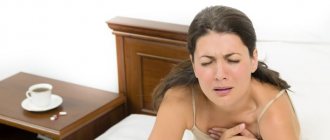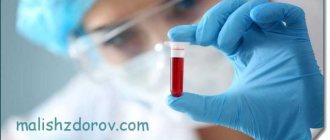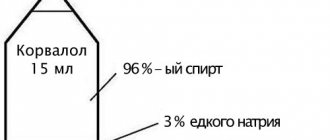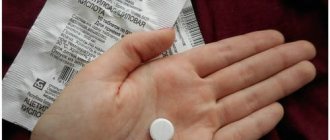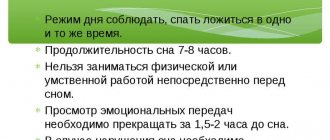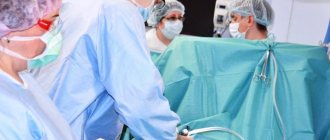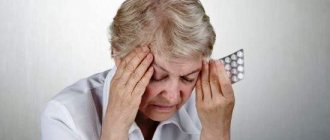What is vasospasm?
A child's fever may be white or pink with any illness that causes an increase in temperature. The combination of fever above 38℃ with spasm of skin vessels is white fever. Doctors otherwise call this condition hyperthermic syndrome.
Why does a child usually blush when he is hot? Because small capillaries of the skin expand. This is a normal reaction of the body, which increases heat transfer with an increase in heat production. More heat is generated:
- when resisting infection,
- in hot weather,
- from physical activity.
Through the dilated vessels, more heat is released, this protects against a further rise in temperature to 39-40℃. Therefore, pink fever is much better than white fever, it is easier to fight, and it is easier to bring down such a fever.
Vasospasm leads to a decrease in heat transfer through the skin. As a result, more heat is supplied to the internal organs with heated blood, and they continue to overheat. The temperature inside the body rises quickly, but the limbs are pale and cold.
If this is the first time you have encountered this condition in your child and you do not yet have proven skills to successfully combat white fever, do not risk your baby’s health. Call an ambulance immediately. Or your pediatrician, if you are sure that he will arrive very quickly.
Causes of spasms
Why can a child experience peripheral vasospasm at high temperatures? The reasons may be different:
- critical dehydration, which occurs if the baby is not immediately dehydrated after the temperature rises;
- a strong increase in blood viscosity due to hyperthermia - this is due to the previous cause;
- disruption of the nervous system due to injury or chronic diseases;
- low blood pressure.
Incorrect actions to reduce it can also lead to vasospasm at a high temperature in a child:
- ice pack,
- cold enema,
- cool bath,
- wrapping in a damp sheet,
- wiping with cold water, vinegar or alcohol solutions, which is absolutely not allowed.
These physical methods of cooling are sometimes used by doctors in hospitals or at home, but before this they administer an antispasmodic to the patient, so spasm of peripheral vessels does not occur.
Normal temperature readings
Normal values for children are considered to be 36.6 degrees. However, a baby's temperature may be slightly higher.
Attention! The temperature regulation system in children is not fully formed, so temperature readings can vary significantly during the day. A deviation of 0.5 degrees is observed even in healthy children.
An increase in body temperature in a baby is not a reason for parents to panic. This change is natural. At this moment, the mother must take care and follow the doctor’s instructions. Under such conditions, progress in recovery will not be long in coming.
Normal temperature is an indicator of health.
Symptoms of spasm at high temperature
White fever is characterized by the following symptoms:
- hot forehead;
- white spots under the nails;
- the baby is shivering and cannot warm up;
- the child’s heartbeat and breathing become more frequent;
- the farther the skin is from the heart, the paler and cooler it is;
- a “marbled” pattern and cyanosis appear on pale skin, lips and nails;
- cold and pale limbs, palms and feet turn white and may even turn blue.
Conventional antipyretics, Paracetamol and Ibuprofen, without combination with antispasmodics are ineffective for spasm of peripheral vessels. If the baby is not given timely help, then the further development of hyperthermic syndrome leads to convulsions, general weakness, delirium and loss of consciousness.
How to relieve vascular spasm in a child?
If you don’t know how to deal with white fever in a child, then you’ve encountered this for the first time. Don’t waste time, call a doctor or an ambulance, or take him to the hospital, if it’s faster. In the meantime, medical services are still on the way, we are starting to help the baby cope with this serious condition.
- If the child is shaking from chills, dress warmly, first of all, warm the hands by gentle rubbing or in warm water (but no alcohol or vinegar) and feet with woolen socks. At the same time, you can place a napkin moistened with cool water on your forehead.
- In order for cooling to occur when inhaling and exhaling, and not further overheating, you need to ventilate the room to 18℃ and, if possible, humidify the air, at least with wet towels on radiators.
- We offer you something to drink without stopping: water, juice, rosehip infusion, even soda. But a rehydrating solution or low-mineralized mineral water is better. If the child categorically refuses, at least a little from a teaspoon or from a syringe housing. But often.
What medications can help a child with vasospasm?
It is useless to give antipyretics, both in the form of suppositories and in the form of syrups. When the peripheral vessels of the skin and limbs are spasmed, the same happens to the capillaries of the intestines and stomach, and therefore Paracetamol and Ibuprofen are not absorbed in any form. For antipyretics to work, the spasm must be relieved, and for this, antispasmodics are needed half an hour before taking antipyretics. It is best if they are administered by doctors in the form of injections.
Children from 6 months of age can use Papaverine as an antispasmodic, and from 1 year of age no-shpu. These medications have many side effects, it is better not to give them without consulting your doctor. Papaverine and no-spa are dangerous for low blood pressure, as they reduce it even more. It is also prohibited to take no-shpa for:
- diseases of the liver, kidneys, heart,
- bronchial asthma,
- lactose metabolism disorders.
If vasospasm at a temperature that led to white fever in a child occurs for the first time, the child must be examined by a pediatrician before taking medication. Get specific recommendations from your doctor regarding the possibility of using antispasmodics and dosage, and only then give Papaverine or No-shpa.
Half an hour after taking antispasmodics, you can give Ibuprofen, again observing the dosage.
Paracetamol is less effective for spasms with fever because it causes vasoconstriction.
Please note that analgin as an antipyretic can be given to children only from 12 years of age, and aspirin - from 15 years of age, and in Europe and the USA analgin is not used at all due to severe side effects, and aspirin is prohibited in pediatric practice. With white fever, the dangerous effects of these drugs are aggravated, since the child’s blood circulation is already impaired, and the likelihood of Reye’s syndrome or damage to the heart muscle increases.
Treatment
Treatment of vasospasm is aimed at:
- elimination of the main cause of spasm (inflammation, increased thrombus formation, atherosclerotic process, hypertension);
- restoration of nervous regulation of arterial tone;
- relieving symptoms of temporary ischemia of organs and tissues;
- preventing the development of more severe diseases.
Bad habits are the beginning of many diseases
For any localization of vasospasm it is necessary:
- stop smoking and alcohol abuse;
- organize the correct work and rest schedule;
- remove excess weight;
- exclude from food foods that increase blood cholesterol;
- engage in vigorous physical exercise.
- medications from the group of calcium antagonists (Verapamil, Nifedipine) are indicated; they help relax the vascular wall.
With spasm of the coronary vessels (Prinzmetal's angina), Nitroglycerin and Isoket aerosol help relieve attacks. If attacks occur frequently, then long-acting nitro drugs are prescribed.
We recommend reading the article: Effective tablets for brain vessels
Cerebral symptoms are relieved with antispasmodic drugs (Papaverine, No-shpa). Angiospasm of cerebral vessels must be distinguished from vertebral artery syndrome, which also causes similar temporary signs of impaired blood supply to the brain. However, the main reasons lie in the disrupted structure of the vertebrae or the presence of atherosclerotic plaques in the aorta and the artery itself. Manifestations occur when moving the head, bending, turning.
Therapy for vascular lesions of the lower extremities includes taking antispasmodics and drugs that improve nutrition of the tissues and muscles of the legs (Nicotinic acid, Depo-padutin).
Great importance is attached to the possibilities of physiotherapy. Procedures such as electrophoresis with novocaine, lidase, paraffin and ozokerite applications, mud therapy, contrast douches, radon and hydrogen sulfide baths help maintain the patient’s motor activity.
Surgical treatment is necessary when conservative therapy is unsuccessful. It consists of using a series of novocaine blockades of sympathetic nodes to eliminate the spasmodic effect of Raynaud's syndrome, spasm of the arteries of the legs.
If this does not produce an effect, the corresponding nodes are removed (sympathectomy).
Consequences of vasospasm during fever
With any fever, a child may experience febrile convulsions, but they are most likely before the age of 6 years and with the white form, when a temperature above 38℃ is accompanied by vascular spasm. The immediate cause of a febrile seizure is a deficiency of sodium ions, which occurs with critical dehydration.
During a seizure, the main thing is that the child does not injure himself or choke on vomit. To do this, you need to carefully hold the baby, preferably in a position lying on its side.
Other negative consequences of vasospasm at fever:
- heavy load on the heart muscle;
- decreased oxygen supply to the skin and internal organs, which can lead to metabolic disorders;
- the development of neurosis due to the child’s worries about such a serious condition.
With timely assistance, all these consequences are minimized. But please note that a tendency to white fever is an indicator of a not very good state of the body. It is worth visiting the pediatrician once again, taking urine and blood tests, and going to an appointment with a pediatric neurologist. A child cared for by his parents, as they say, is also protected by higher powers.
Symptoms and treatment of headaches during pregnancy
Cephalgia has different classifications. Below we will talk about what to do if you have a headache during pregnancy.
Tension pain is characterized by dull and monotonous painful sensations. This creates a feeling as if the head is tied with an elastic bandage. Often with this type of ailment, women complain of discomfort from the neck to the back of the head, temples and eye area. During palpation, painful points are felt in the neck and back of the head. Possibly nausea, no vomiting. As a rule, the duration of such sensations is from half an hour to one and a half hours.
Tension pain appears due to mental or physical fatigue, nervous exhaustion, and stress. Treatment of this type of cephalalgia consists of eliminating symptoms using the following means:
- Glycine is a drug that reduces psycho-emotional stress and signs of VSD, improves mood, mental performance and sleep. Glycine is useful to take to prevent frequent headaches due to an unstable nervous system.
- Valerian - prescribed in case of overexcitation of the nervous system and sleep disturbances, up to 4 tablets at a time.
- “Extraplast” compress patch – it contains lavender, eucalyptus, menthol and castor oils. All these substances do not penetrate the human circulatory system, so they are safe for the fetus. The cooling patch should be applied to the dry skin of the forehead or back of the neck so that it does not come into contact with the hair. Each patch is designed for one-time use only. You cannot keep it on your body for more than 6 hours.
A characteristic feature of migraine is prolonged throbbing pain in one side of the head and spreading to the eyes. As a rule, the duration of such symptoms ranges from 4 hours to several days.
In some cases, the pain is accompanied by nausea and vomiting. Before the attack, you may notice blurred vision, visual or auditory hallucinations, and taste changes. Any physical activity only increases the signs of malaise.
Migraine occurs as a result of irritation of the nerve ganglia and plexuses in the head and neck area. This condition is provoked by diseases of the cervical spine, cerebral vessels, and paranasal sinuses.
In the second and third trimesters, you can take several Paracetamol tablets to relieve discomfort. Despite the fact that experimental studies have not confirmed the negative effects of Paracetamol on fetal development, it is still not recommended to take it in the first trimester. It is better to use suppositories instead of the tablet form, since they contain a lower dosage of the active substance and are allowed for children from 3 months. A few Valerian tablets will also help cope with a mild form of migraine.
A characteristic feature of vascular headache is throbbing pain in the occipital, parietal, temporal and other areas of the head. Most often, such ailment occurs with hypertension and hypotension, VSD and other pathologies of the cardiovascular system.
A distinctive feature of hypertension is the narrowing and spasms of blood vessels in the brain, resulting in the formation of cephalgia. During a hypertensive crisis, the listed symptoms may include a feeling of heaviness in the head, increasing general weakness and blue lips. The occurrence of vascular spasms in the brain is often accompanied by nausea and tinnitus.
How to get rid of discomfort? Use a cold compress on the forehead or back of the neck, it constricts the blood vessels, which is useful for hypertension.
For hypotension, it is recommended to use a hot compress, as it dilates blood vessels and improves low blood pressure. If you are prone to hypotension, try to lead a healthy lifestyle, do not overeat and get enough sleep. During a crisis, it is best for you to lie down for 40 minutes with a warm compress on your forehead. Or drink some coffee.
It is useful to regularly use a contrast shower, as it not only has a beneficial effect on the skin, but also normalizes blood pressure.


